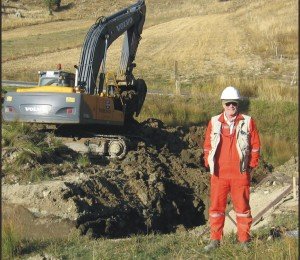
Phase I Environmental Site Assessments (ESA) are usually performed as part of a commercial real estate transaction. The primary purpose of the assessment is to satisfy one of the requirements for the innocent landowner defense to liability under the Comprehensive Environmental Response, Compensation and Liability Act (CERCLA).
Unless directed otherwise, Lahontan GeoScience, Inc. (LGS) performs all Phase I ESA’s according to the guidelines set forth by the American Society of Testing and Materials (ASTM) designated E 1527-97 Standard Practice for Environmental Site Assessments: Phase I Environmental Site Assessment Process. These guidelines define the industry standard for good commercial and customary practice for environmental site assessments.
Each Phase I ESA will be different depending upon the size of the property being studied and the nature of activities conducted on the site. However, you can expect all of LGS’s Phase I reports to include the following items:
- Site Description and Physical Setting Review, including current and historical uses of the property, site and vicinity characteristics, and any maps, plans and/or renderings as applicable;
- Records Review, including standard federal, state, and local regulatory records, historical use information, and other records as reasonably available.
- Site Reconnaissance and Interviews to identify current or past recognized environmental conditions in connection with the site and/or adjoining properties.
- Aerial Photographs and/or Fire Insurance Map Review to determine historical uses and improvements on the subject site and in the general vicinity.
- Findings and Conclusions to clearly summarize the results of our research, and where applicable, make recommendations for additional investigation or remedial actions.
Lahontan GeoScience’s qualified staff has many years of experience in generating accurate and professional Phase I Environmental Site Assessments. Each report is prepared to satisfy the client’s need for appropriate inquiry, unless requested otherwise.
Phase II Environmental Site Assessments expand on the work completed during the Phase I ESA. They are most often performed following the identification of past and/or present recognized environmental conditions in connection with the subject site. Phase II work involves limited subsurface investigation to characterize the degree and extent of contamination present in the soil and/or groundwater. Characterization may involve the placement of groundwater wells or geotechnical boreholes.
Phase III Environmental Site Assessments utilize the data gathered during Phase II work to determine appropriate remedial actions, when necessary. The goal of a Phase III ESA is to reduce the concentration of identified contaminants to below the applicable regulatory agency action levels. Examples of remedial actions implemented by LGS are in-situ bioremediation of soil and groundwater pumping and treatment.

